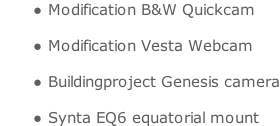



Copyright © All rights reserved. Made By Erik Bryssinck Terms of use | Privacy policy














|
Observation date |
image |
Photometry (FOCAS) |
Afρ |
astrometry |
Observatory |
|
X |
X |
|
X |
B96 - |
|
|
X |
X |
|
X |
B96 - |
|
|
|
|
|
|
|
|
|
|
|
|
|
|
|
|
|
|
|
|
|
|
|
|
|
|
|
|
|
|
|
|
|
|
|
|
|
|
|
|
|
|
|
COMET 472P/NEAT-
Af(rho) data according the CARA-

Comet 472P/NEAT-
An object reported as asteroidal independently by the NEAT and LINEAR surveys, and later placed on the NEOCP, has been found cometary in appearance. P. Birtwhistle, Great Shefford, U.K., reports that CCD images taken with a 0.3-
Although some time from perihelion, it is a distant object in a periodic orbit and will initially fade. The period is around 21.2 years and the perihelion distance 3.4 au.
Recovery: [ COMET P/2002 T6 = P/2023 RL75 (NEAT-
An asteroid was discovered at 21st magnitude by Erwin Schwab with the Calar Alto-
Given that an orbit was published before the identification was known the comet should have become P/NEAT-